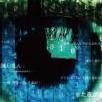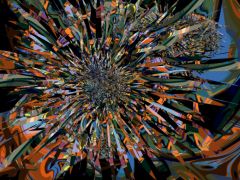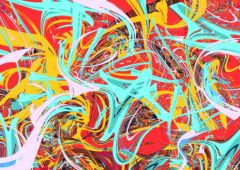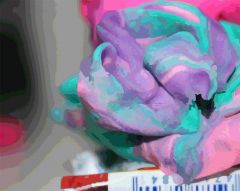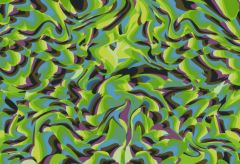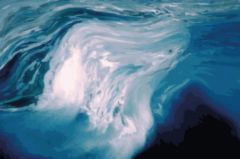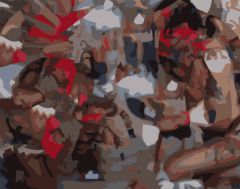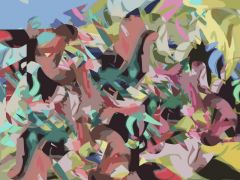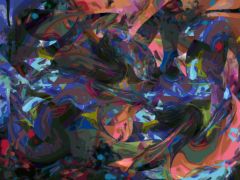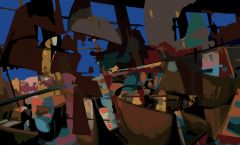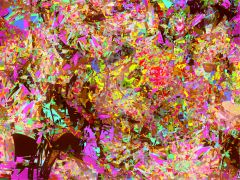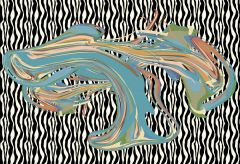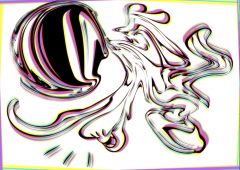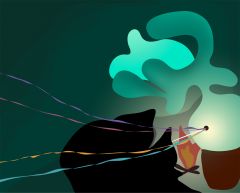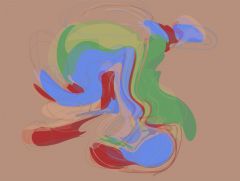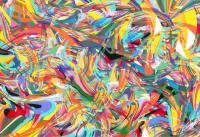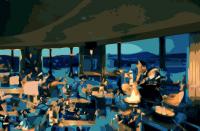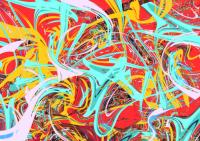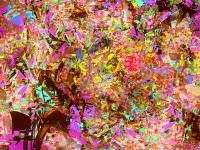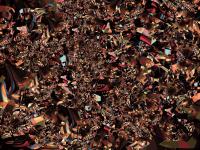-
Posts
31 -
Joined
-
Last visited
Previous Fields
-
Climate or location
Australia
Recent Profile Visitors
1,062 profile views
shivaindisguise's Achievements
Newbie (1/14)
-
-
-
Yes please - thanks so much goldtop. I think giving loph stuff away is only really appreciated in places like this, and it really is. I hope to enjoy growing these and give them away to more. PM'd.
-
Got em today - thanks again mate.
-
PMd for a pack. Have been so slack getting the cheaper loph mixed and LW mixed seeds- ditto with preferring to know the exact variety Goldtop - just so expensive. Great price though.
-
pmd as well for a few.
-
-
Pmd.
-
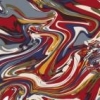
Young Australian Psychedelic Art
shivaindisguise replied to shivaindisguise's topic in Creativity, Spirituality & Philosophy
Thanks curaezipirid and kalika . Really appreciate your ideas and encouragement. These posts are very important in determining my direction. Try to keep it brief and clear: 1. My definite mistake on "traditional artists"! I had meant Eurocentric Australian traditional artists 1800-1900. 2. I too agree that there is murky distinctions between what causes the patterns whether it was humans or landscape - it feels like chicken and the egg. The relationship between the artist and the viewer, nature and the art piece - is an intensely strong point. Clearly showing that there is no distinction between these sort of Western reductionist ideas. 3. The strongest psychedelic ART is most definitely biodiversity. Seems as if again each pattern or creation is just a novel reflection of the same code. 4. Kalika - This is exactly the point of Australian psychedelic art I had felt but couldn't articulate. "shimmering patterns reminiscent of a scorching desert, sparseness punctuated by outbursts of fractal beauty". The landscapes seem to start sliding into one another - patterns clash with one another, rather than it just being leaves on trees. Some artists it feels as if they are seeing into the landscape at that time, and trying to reveal the underlying codes at play rather than strict realism of the surrounding world. 5. "For the plant itself, its cultural utility apart from its use as an intoxicant should be enough to ensure its protection". "publicly prove aboriginals got high off acacia is really the best idea" "western society to try and use indigenous culture to publicly justify use of an illegal substance" - These are points I definitely feel need to be at the top of the agenda due to cultural sensitivity. I am trying explicitly to see whether or not the visual style of their cultural artefacts are linked to historical or current use. This would add extra research to both Australian Indigenous history as well as to the history of Acacia use. Thats the main goal - the future potential of using this research to legitimise the substance would be up to someone else to tackle that battle. Like you too, I feel like the best avenue forward is to focus on the cultural artefacts from the Acacia - even if I feel like it doesn't matter whether they are from Western or Indigenous sources. 6. Now this is a coincidence (or bad theory) - Xenodimensional is secretly one of the most fantastic blokes you could meet. I specifically met with him for coffee to discuss that film you posted being on my site acaciaarts.com approximately 2 months ago. That film is exactly what is required. Except the goal for artists must be to continue refining the video effect techniques to explicitly represent the visual style of complexity, depth etc. He also agreed to do an interview discussing the problems representing the visuals. On a side note - I have spoken with Mitch Schultz (director of DMT: Spirit Molecule) about the process of him working with his animators and on a side not he mentioned that he had to describe the visuals to the animators, so they could represent them. They were not working from experience. To me this rang alarm bells - there needs to be a bank of artists, animators who are experienced in the field to retrieve back visuals from - a predominantly visual substance. It seems ludicrous to write a single paper on what is purely a visual, motion experience. No camera can represent the subjective experience, and so artists are given the same power of explorers. For they are the only ones who can return and speak in the language of the visions. The best probability for this to unfold would be for artists/animators to be the prime individuals who are used for future legitimate DMT human psychedelic trials. Specific trials with specific visual test apparatus. ~~ Just and update ~~ Received an email from MAPS today (after sending a letter enquiring as to any further research) encouraging the study, seeing its immediate potential benefits for studies in psychopharmacology. This really got me excited once again, hearing it from a very formal place - (even if it is just a single response). I am definitely spending the next 6 months preparing how to tread this murky water so I can get a scholarship and formalise the research. I am just totally struggling without it being a formal process - feels far too loose.- 15 replies
-
- art
- psychedelic
-
(and 6 more)
Tagged with:
-

Astrophytum asterias and A. myriostigma
shivaindisguise replied to bℓσωηG's topic in Seed & Plant Swaps
PM'D! They look lovely. -

Young Australian Psychedelic Art
shivaindisguise replied to shivaindisguise's topic in Creativity, Spirituality & Philosophy
Thanks Psylo, this does help - Greg is a "man on a mission", which I feel is a very similar path to myself, but it is different in that it is aiming at understanding many hallucinogens, and legalising them - a mighty task. I am trying to add one single piece to the puzzle at a time. My focus is on visual qualities expressed through cultural artefacts - and how far back this goes in Australia's history. By proving a historical link between the Aborigines and Acacia, this would add enormous cultural significance for future legal problems the plant might encounter. However it has to then be incorporated with the future potentials of Acacia visuals. cureaziprid made some fantastic points. I too feel like the traditional landscape painters of Australia have a bleak and yet quite psychedelic type of style. Prior to having personal experiences, I always viewed this type of work as "dull", "realistic", and showing me nothing more than what a camera does. But there were subtle organised patterns of chaos that merge and blend together. They were watching the Matrix, and the God codes of information were embedded in the patterns they were drawing. They were not computer patterns though, perfectly symmetrical. This is a key, because the true Acacia visuals are not perfectly symmetrical. They show fractals, that are not the same pattern repeated - it is as if they are fractals of novelty. I feel that this is one of the major qualities to works like Alex Grey, compared to many other digital psychedelic artists who use digital patterns or fractals. Alex Grey is painting each facet of a pattern, and so he will never get it perfect - it is filled with imperfections. He is simply referencing a higher ordered pattern, through intricately different bits. The parts of novelty are not important by themselves, but together they create, the "experience". This is why it would be impossible to represent visually the experience of Acacia, but you can communicate a perfect isomorphism, or the same intangible structure, without the specifics. Curazipirid also made the point that the sources of shapes in hallucinations could originate from somewhere else. This is one of the ultimate questions that needs to be answered, and can only through visual reference to what was seen, not described. Whether they originate in the ether as suggested, or as I have read by studies "that hallucinations are the physical architecture of the visual cortex". Which is a micro view. Who travels where? For me I feel that it literally unveils new information, around any event or scene - animism; where all things are shown to have already been filled with a living energy. Curazipirid can you please re-explain your really interesting points about : "suspect one another of having set up a set up for catching out who the dreamtime robbers were" - what is a dreamtime robber? Someone who represents visual qualities of the space? "why living in the shade of gum trees keeps you a bit higher than the rest of the planet all the time" - concerning gum tree psychoactive qualities in the stems ? (have heard) "why aussies have less formally figurative psychedelic art" What is determining the style of vision they were representing? Both the traditional landscape artists, and the Aboriginal. I have also just recently read Martin W. Ball's "Essays on 5-MEO-DMT" and Rocs "Tryptamine Palace", and both books are filled to the brim with talk about how DMT is a lesser powerful entheogen, and that the real answer is that it is all perfect non-duality. That the DMT hallucinations are real, but their from your mind, not non-local. That McKennas "machine elves" were nothing more than an "overtly egotistical man, who never got past the fact that he was looking into a mirror". I have a feeling that they have shut off investigations far too quick into the depths of these mysteries. What is required is the perfect representations of the visual qualities of well known social conquests such as the machine elves. Anyone else with interesting points on the ultimately desired visual qualities of Australian psychedelic art?- 15 replies
-
- art
- psychedelic
-
(and 6 more)
Tagged with:
-

Young Australian Psychedelic Art
shivaindisguise replied to shivaindisguise's topic in Creativity, Spirituality & Philosophy
I have a degree and a masters (in Creative Industry areas), and I am trying to get a scholarship for a PhD combining the entheogen and visual art categories for scientific analysis. Last year I was "blocked" by an ethics committee at a University for the title "Visual traits of N,N-Dimetheyltryptamine" even though it was only going to analyse works online created by artists who had admitted to using it (not myself), trying to look at it objectively and inside a broader range of the community. The main reason for not letting it go ahead was for future incrimination when in discussion of any artist, (along with a scary, illegal title). I have spent the past four or five months, heavily researching as much as I can on a "new topic" which I have probably once again pinched inspiration from elsewhere. However, I really want to contribute to a field that needs a definitive answer. So after hearing over and over through whispers, I changed the topic to (drumroll...) "Aboriginal artwork in the context of Acacia use" . I must be honest though Psylo - I felt absolutely devastated last night re-reading over new comments in another topic that is about this particular subject. It was filled with a lot of hostility, and I felt incredibly guilty and naive. Now I've only recently come upon that thread, but I have not followed the entire thing. I have gotten the basic picture of the argument, and I am not sure which side anyones on! I don't want to do anyone any harm, or damage, or incrimination. But I think that it is a definite worthy investigation, that should be led openly, calmly and transparently. This is of course my own projection and not the viewpoint of traditional elders. This would be the goal of forcing a restricted study on this topic alone - allowing all sides to emerge in a long lengthy investigation. My goal would be to trek to traditional towns further North, and make a documentary on the subject. I would be hoping for full co-operation with the University I would be at - allowing all styles of enquiry into the subject matter - including large Aboriginal and Torre Strait Island sections of support and research - which would then filter to further connections. The goal (for me) would be the path of least resistance. It would seek co-operation with elders to build upon the already huge amount of research that would be then added to larger banks of psychedelic research like MAPS. This would hopefully show the extent of how sacred the knowledge is viewed and the lengths taken for it not to be lost - (to show such a large chain of already interconnected cultures and sub-cultures). Of course it could be simply to dispel the myth - but this is why trekking out for one-on-ones over the length of 4 years would help, particularly if it was showing a specific tribe still using methods that have been passed down. This is by no mean the only topic I'm interested in, as I feel this is proving a historical point, that would align with a current point, and that there is a whole can of worms for the future point all this could lead to. That is by far the most interesting one - what we can actually do from understanding the mechanics of the hallucinations - animators are really the only ones who can represent what is going on in this novel field - no camera can capture the subjective state. Only artists can represent them. The more skills an artist/animator has, the better articulate in the visual language they become. An artist is the only information channeller or technology we have in representing what is seen "behind closed eyelids". Rather than just coming back with thousands of trippy images, the point would be to go ten steps further by understanding the mechanics of the visions, and creating a hyperspatial map - a map that would contain the various visual categories or places/stages one can access, and how they move and function. Would love to hear your thoughts on this Psylo or anyone else - though I have a feeling that no matter how I could try to approach this type of subject - I would always leave myself open to being incorrect, since I'm trying to show something that is not a personal experience.- 15 replies
-
- 1
-

-
- art
- psychedelic
-
(and 6 more)
Tagged with:
-

Young Australian Psychedelic Art
shivaindisguise replied to shivaindisguise's topic in Creativity, Spirituality & Philosophy
Thanks for the encouragement Psylo and Amazonian. On theAustraliens note - was a genuine, major, stuff up by myself. I thought I had just come up with a fantastic name, bought the domain and space, and then googled and realised it was a gigantic online psytrance scene (I must have heard about it). So I think I will just back off from that one completely, and transfer the site I was building to a new name.- 15 replies
-
- art
- psychedelic
-
(and 6 more)
Tagged with:
-
Hey guys and gals, Am stoked to present my website which tries to show something different within the psychedelic art scene. I try to steer away from repetitive patterns and move straight into novelty. I am totally still learning and starting out, but I am busting my balls in trying to develop new visual tastes that reflect specific moments of visual psychedelia. I am interested in the theory that accompanies pieces, so its not just splashy colour. Each piece is a different code that is unique to itself. It is self-reflexive and talking to itself in the work. This starts a visual loop cycle. There is no ideology - no thing is made to look like any thing. This allows you to start the hallucination process within a contained space. You start to link bridges with other bridges, finding startling results and intricate story lines. It is not abstract art as I am showing specifically this trait. It is hallucinatory realism. It is without an over-riding storyline on top. Patterns are only ever referenced never shown - allowing you to absorb into the novelty of it. Please have a browse around, as I feel this is the community who would be open to new and subtle details of visual language which can only be evoked by those who have seen the world unbound. www.liamkey.com There are 3 other sites that are in the works. One is totally dedicated to being a research portal for artists in the context of Acacia use. www.acaciaarts.com (still being made) And another for anyone who would like to be involved www.theaustraliens.com (still being made). This site will focus on the website design being the art piece. Currently up is www.valleyofnovelty.com which is a randomly loading "gallery". Any psy artists can submit their works to be loaded into the novelty machine. I realise that all my shit is totally at a half way stage, but I am preparing to do a PhD in the field next year. I have a degree and Masters, and have been blocked by an ethics comittee at a University in QLD. I would really like to steer this artistic movement in a very progressive direction. One being to refine the work made to becoming research standard, thus allowing visions captured by artists to adhere to a strict protocol to enhance decipherment. There are many pitfalls when trying to transcribe a vision, and this is why it is just dumped with other design art pieces. More is being described in
- 15 replies
-
- 1
-

-
- art
- psychedelic
-
(and 6 more)
Tagged with:

